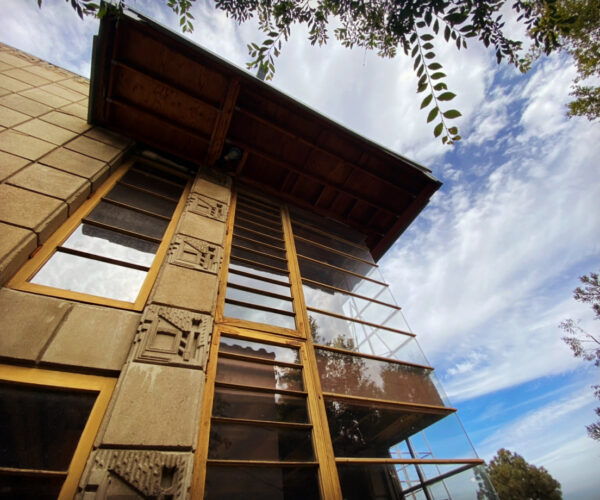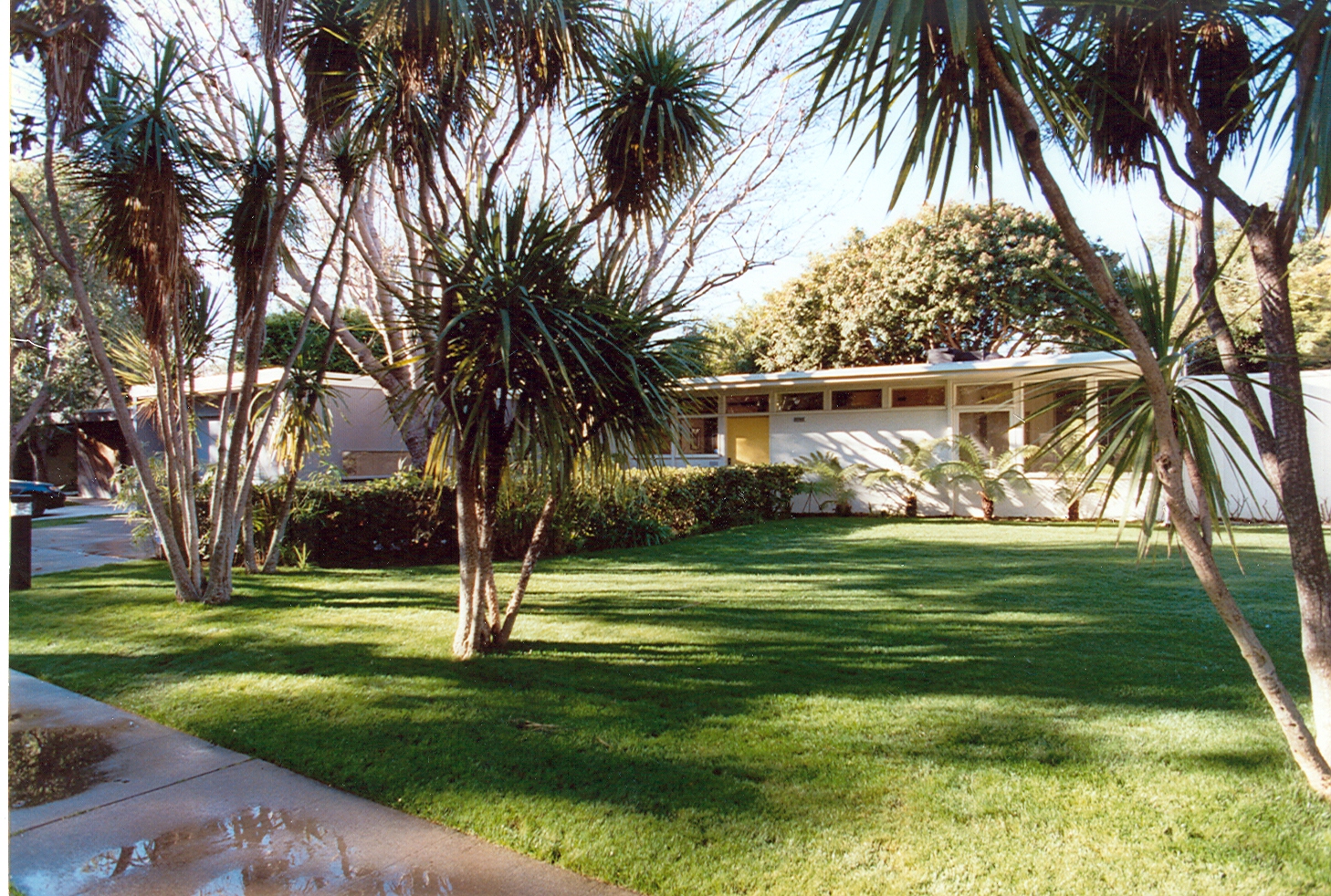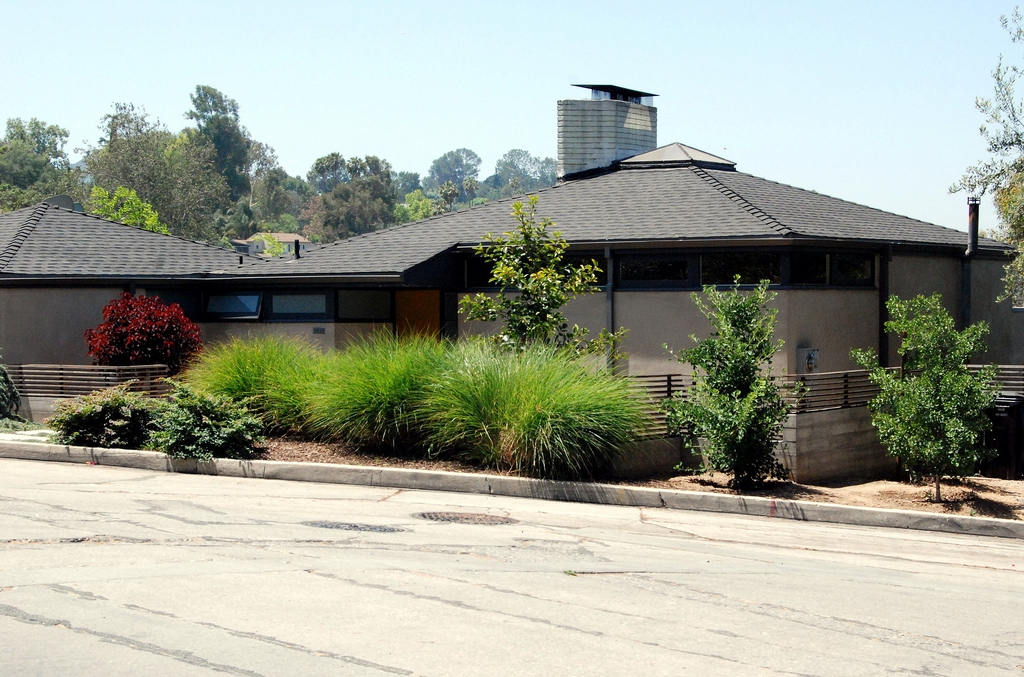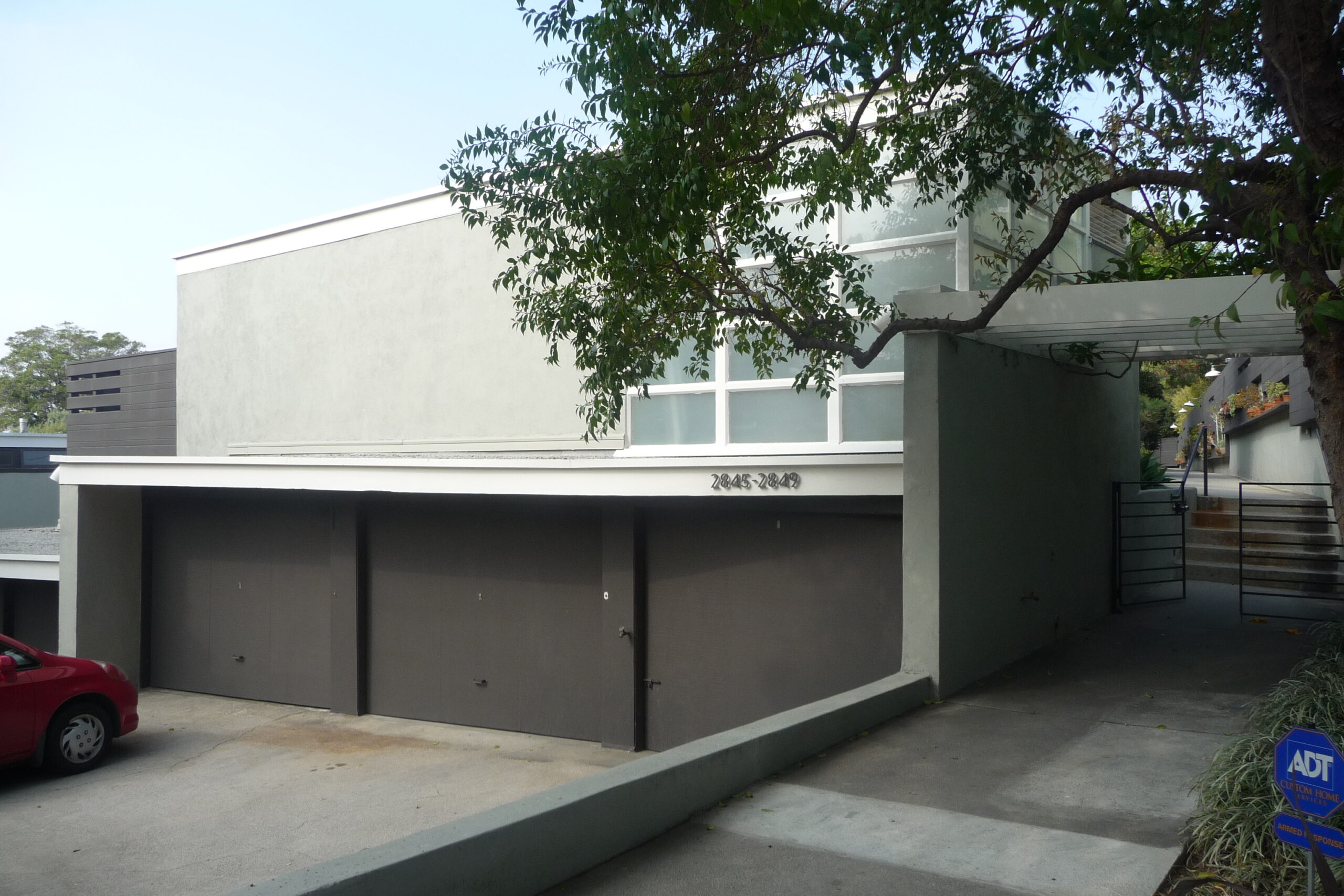Architect
Gregory Ain
Gregory Ain, FAIA (1908-1988)
Gregory Ain was as much a social activist as a visionary architect. Ain’s designs were fueled by the belief that Modern architecture could improve people’s lives. He was committed to designing well-planned communities and affordable housing accessible to all, and he clearly put this philosophy into practice in Los Angeles.
Between the 1930s and the 1960s, Ain designed innovative single-family homes, cooperative housing, apartment complexes, and entire communities. He was most prolific in the postwar years, when he partnered with Joseph Johnson and Alfred Day to design tract developments that fostered indoor/outdoor living and community interaction. Perhaps the most successful of these developments was the Mar Vista Tract, built in 1948 and marketed as Modernique Homes. In 2003, the Gregory Ain Mar Vista Tract became L.A.’s first Modern historic district (Historic Preservation Overlay Zone, or HPOZ).
Ain’s social views can be traced back to his upbringing. Born in Pittsburgh in 1908, Ain grew up in Los Angeles’ Lincoln Heights neighborhood. For a time, the family lived in a cooperative colony in the Antelope Valley founded by socialist Job Harriman, a Los Angeles mayoral candidate supported by Ain’s father.
Professionally, Ain was deeply inspired by the first generation of California Modern master architects including Rudolph Schindler and Richard Neutra. Ain attended USC’s School of Architecture in 1927 but became disillusioned with the Beaux Arts curriculum and dropped out after one year.
He worked for Neutra from 1930 to 1935. In 1940, he was awarded the prestigious Guggenheim fellowship to continue his research on low-cost, prefabricated housing. In 1950, Ain’s Los Angeles residential designs impressed Philip Johnson, then director of the Department of Architecture at New York’s Museum of Modern Art. Johnson commissioned Ain to build a house in the museum’s garden.
Despite the recognition, in the midst of 1950s McCarthyism, Ain’s social ideas were not received well. He lost numerous commissions, including involvement in the Case Study House program. Yet he garnered support from prominent and like-minded Angelenos. One of them, famed civil rights attorney Ben Margolis, hired Ain to design his home in 1951. The Los Feliz residence, which has a much later addition by Pierre Koenig, still stands as a prime example of Ain’s ingenuity and design philosophy.
Ain taught architecture at USC for several years after World War II. In 1963, he became dean at Penn State’s School of Architecture. He returned to Los Angeles in 1967 and remained until his death in 1988 at the age of 79.
Related Places
-

Place
Harriet and Samuel Freeman House
-

Place
Margaret and Harry Hay Residence
-

Place
Mar Vista Tract
-

Place
Tierman House
-

Place
Harriet and Samuel Freeman House
-

Place
Margaret and Harry Hay Residence
-

Place
Mar Vista Tract
-

Place
Tierman House
-

Place
Avenel Cooperative Housing